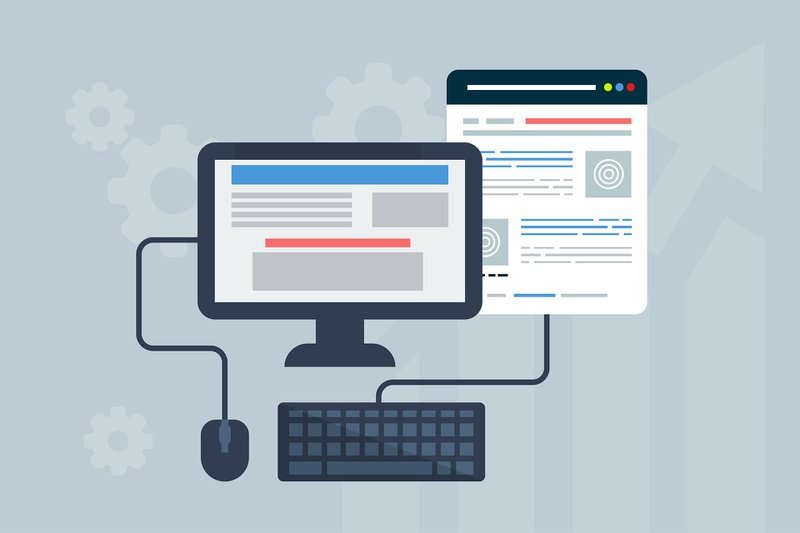90% of startups fail. They mostly fail because of the lack of market need. That's why it's crucial to validate your product ideas before allocating resources to a software project that is destined to fail. How do you know for certain if there's a market need for the software that you'd like to develop, though? Pre-sales constitute an answer. A software pre-sale helps you validate your product ideas without investing in them. You also get to fund your software development with the money you earn from pre-sales and develop a product that the market truly needs.
Here are 5 steps to a successful software pre-sale:
Step #1: Find Audience Paint-Points

The first step to a presell is surely to find out the audience paint-points to come up with the right software idea that the target market would be interested in. When you accurately define what the point-points of your audience are, you get to understand what exactly frustrates them. Also, you need to question how they impact their lives and what they look for in a product solution.
Knowing what your audience wants is very important. It determines the kind of software product you are to develop. You can find your audience pain-points in a few different ways:
Surveys
You can survey your audience simply by asking what their biggest pain-points are through surveys you create online with online survey tools. Here’s a detailed post on how to conduct market research surveys for surveying your audience on Survey Monkey.
Social media
You can oversee what your target audience talks about on a specific subject with regard to a potential pain-point on social media. You may either do so in a passive manner by simply observing the right social media channels such as by using twitter search bar through hashtags or joining related Facebook groups created on that subject. Or you can actively interact with your audience and urge them to speak on that particular pain-point you’d like to resolve. You can accomplish that by creating a closed Facebook page to ask questions, share information, and build more close relationships with the members of that group as your target audience.
One-on-one Interviews
if you’d like to have an in-depth understanding of the pain-points of your prospective customers, you need one-on-one interviews. It will help you find out exactly what products and services your audience may want to buy.
Here are 3 questions you should consider asking during your survey interview:
- If you could have the best results about (the pain-point), what would it look like or feel like?
- What impediments or frustrations prevent you from achieving that result?
- If a software product was custom designed to your exact needs, what would it look like?
Step #2: Map Out A Basic Outline

After you have enough insights into what sort of a software product that your audience might be interested in, you need to put a basic outline together. What your customers can expect, how your software piece makes their lives easier and so on. You may come up with certain mock-ups or prototypes, or simply create a wireframe to have some material that people can envision what the finished product will look and feel like.
According to Dan Martell, you do not even need to create a Minimum Valuable Product (MVP) at this point, which has been all the rage in the last decade among entrepreneurs. Because an MVP still needs you to allocate resources for materializing your product offer since you need to write some codes and develop your software. But instead, you need a MEVO, a Minimum Economical Viable Offer, which is basically what you’re pre-selling to the prospective customer. A MEVO putts enough information together to help your audience gain interest in what you plan to create. Here’s Dan’s podcast going through MEVO in detail.
After you decide on the product idea that you’d like to progress further as well as the minimum viable offer, you need to map out a financial forecast for how many customers or what funding levels you need in order to develop your software product.
Step #3: Create a Sales Page

After you determine the paint-points of the market along with your value proposition of a software product resolving those issues, the next is step is to create a sales page. Here are a few elements to consider while creating a basic sales page.
Be explicit in saying that this is just a Pre Sale. Let your customers know that your software product hasn’t been developed yet.
Make the discount apparent. Your customers would only pre-buy a presell offer if there’s a considerable pre-sale price. Highlight it. Also, mention that the price is going to increase so that you create some sense of urgency.
List 3 to 5 Benefits. Let people know what’s in it for them to preorder your software. This section is for re-articulating the pain-points your customers have.
Add in a Few Testimonials. Testimonials are great for constituting the social proof convincing your prospective users to preorder your software. Let a few customers use your product for free, if needed, to get their honest feedback for displaying them on your sales page.
Add a countdown timer. Urgencies are powerful. Reminding your audience that the pre-sale offer is only for a limited amount of time would surely incentivize them to preorder.
Call to Action. After you laid out enough information for the visitor to place the order, direct them with caution within your funnel through proper CTAs. It seems obvious now but you’d be shocked how often neglected this is.
Step #4: Launching Your Pre-Sale Offer

After your sales page is up and running, it is time to announce your software pre-sale. Having an email list of people who are already familiar with your work makes the launch stage easier. First, you need to determine what percentage of conversion you’d consider as success.
If the attention you’re getting after a series of emails is less than you originally expected, then you might want to reconsider what is wrong with your software idea or marketing plan. But if it’s just as you expected, or even higher, then you know you're on the right track.
Launching a pre-sale offer is the same as launching an actual product. You need to generate a buzz. Here’s an emailing series of 4 to 5 emails to be sent within the week of your product launch.
Start with a Pre-Launch Email to generate curiosity. Keep it casual and let people know that you launch a pre-sale offer of a great product in days.
Send a Launch Email the day you’re launching your offer with the exclusive details on your software pre-sale. Include the details on what your product is, how they can benefit from your product and your pre-sale offer, and so on.
Following your launch, send a “Are You a Good Fit?” email for getting the right customers on board. Mention who could really be a great fit for your product as a reminder of your launch offer. It’d also help you reemphasize how you’re easing their pain-points with your pre-sale product offering.
And the day you’re finally closing off your deal, send a Last Chance Email to generate urgency and scarcity to leverage it on the last day of your pre-sale launch.
But what If you don’t have an email list?
Then you need to resort to mostly content marketing to drive organic traffic to your launch page, which might, however, take some time to build the momentum you need at the beginning of your pre-sale launch.
You can write a series of blog posts about the pain-point you’d like to resolve with your software offering. Guest blogging might be a better choice for leveraging the existing reader-base of the blog page you’re contributing to.
And/or you can create a video series on the same subject, going over the problems you’re resolving and introducing your software product.
Or you can simply share your software pre-sale on related Facebook groups as an exclusive offer for the members of that group.
Step #5: Close Your Offer

Like every other successful product launch, pre-sale launches also need to have a defined beginning and an end. That’s important for ensuring the sense of scarcity and motivating your audience to take action. That is why sending out Last Chance Email in the last days of your launch works pretty well. (Remember to exclude the ones who’ve already opened your email in the first place simply not to spam them.)
Following the closure of your offer thank anyone who’s participated and let them know when to expect to hear from you for collecting feedback. If you luckily achieved enough purchase orders to progress further with your software idea, share your timetable with buyers for delivery dates of the preordered software.
Successful Software Pre-sale
A successful software pre-sale comes in useful in many ways. First and foremost, it provides you feedback from real-life users helping you understand better the problems they have for coming up with better product ideas. It also provides you funds to actualize your software project on safer ground. And, the fuzz you generate during the pre-sale launch will surely help you with the momentum you will need when you're finally rolling out your product.
Simply launch a pre-sale offer before going all out on a software project to minimize potential losses and maximize the value you're providing your audience with your well-suited software idea.
If you have any experience with software pre-sale or questions about it, share them in the comments below.
And, if you would like more information on software monetization, we have written these articles to help:
- 7 Tips for Building a Successful Software Business
- 5 Steps to a Successful Software Launch
- 7 Most Profitable Digital Products To Sell Online in 2020
- How to Successfully Sell Software Online
- 7 Key Marketing Strategies for Small Software Businesses
- How to Price Your Software Products (Definitive Guide)